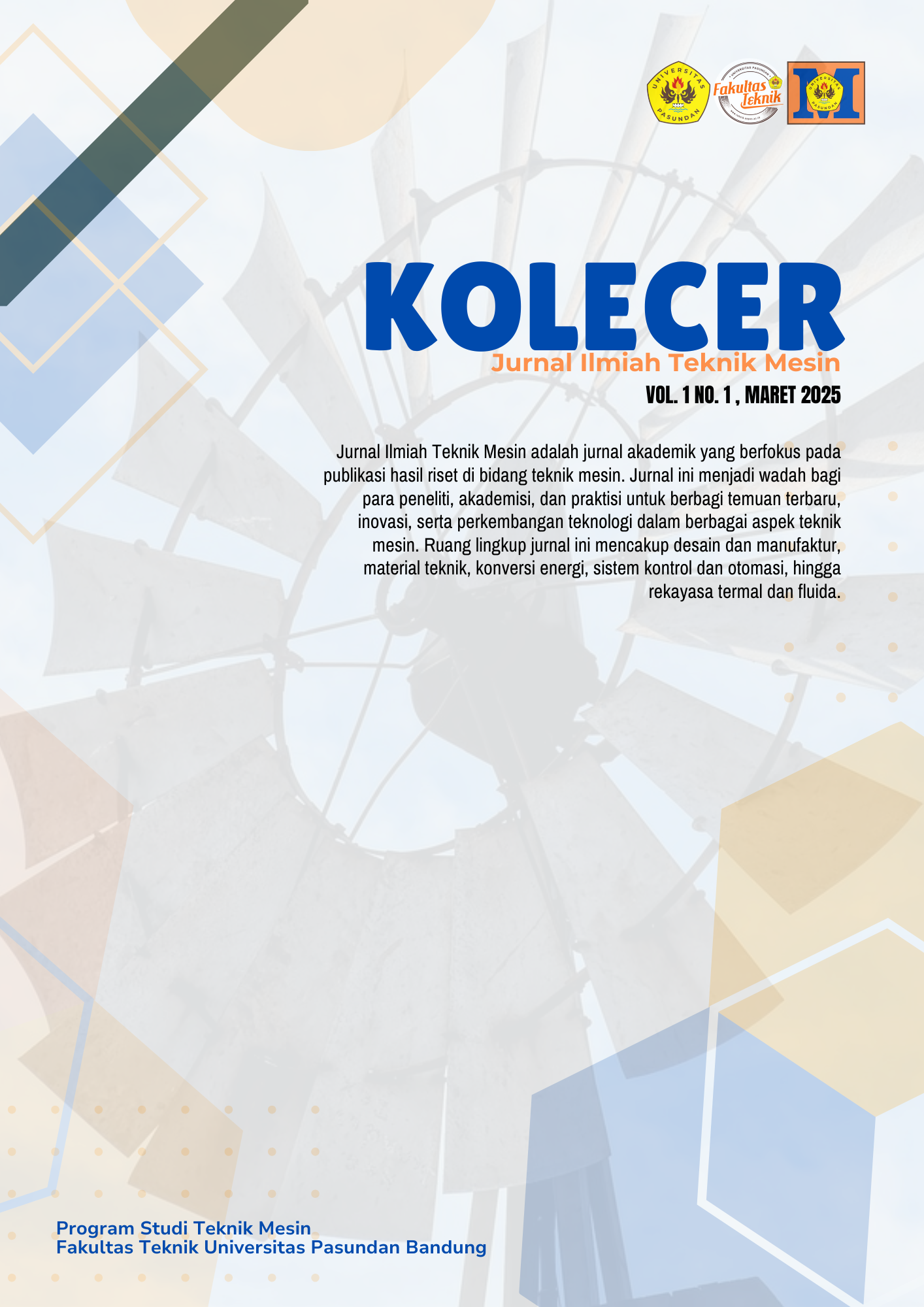Impeller design for centrifugal pump with number of 5 blades driven four stroke 40 cc petrol engine
DOI:
https://doi.org/10.23969/ksjme1120252372553-59Keywords:
Centrifugal pump, Impeler, BladeAbstract
An impeller with five blades was designed to enhance water discharge from the volute. The increased number of blades was expected to exert a more potent force on the water due to a larger surface area. However, excessive blade numbers could obstruct inlet water flow, reducing discharge efficiency. Therefore, a restriction was applied to optimize the blade count. The impeller was developed using an experimental approach, as most designs typically feature four to seven blades. Performance tests were conducted by varying the outlet pipe width through different valve openings, and the effects on water discharge and velocity were analyzed. The results indicated that increasing the rotational speed (rpm) led to a higher discharge rate. At 5,702 rpm with a 100% valve opening, the maximum discharge of 1.426 L/s was achieved, while at 3,536 rpm with a 25% valve opening, the lowest discharge of 0.18 L/s was recorded. The velocity analysis showed that the highest speed of 14.17 m/s occurred at 5,702 rpm with a 25% valve opening, whereas the lowest speed of 2.74 m/s was observed at 3,536 rpm with a fully open valve. These findings confirm that increased valve openings enhance discharge and reduce water velocity due to outlet pipe diameter variations.
.
Downloads
References
1. Zhang, R., Gao, L., & Chen, X. (2021). Optimization design of centrifugal pump impeller based on multi-output Gaussian process regression. Modern Physics Letters B, 35(21), 2150364. https://doi.org/10.1142/s0217984921503644
2. Öztürk, Ç., Aka, İ., & Lazoğlu, İ. (2018). Effect of blade curvature on the hemolytic and hydraulic characteristics of a centrifugal blood pump. The International Journal of Artificial Organs, 41(11), 730-737. https://doi.org/10.1177/0391398818785558
3. Huang, S., Hu, Y., Wei, Y., & Mo, Y. (2023). Analysis of cavitation flow performance in centrifugal pumps using openfoam. Journal of Physics Conference Series, 2610(1), 012023. https://doi.org/10.1088/1742-6596/2610/1/012023
4. Jiang, Q., Heng, Y., Liu, X., Zhang, B., Bois, G., & Si, Q. (2019). A review of design considerations of centrifugal pump capability for handling inlet gas-liquid two-phase flows. Energies, 12(6), 1078. https://doi.org/10.3390/en12061078
5. Rehman, A., Paul, A., Jain, A., & Bhattacharyya, S. (2022). Computational approaches in industrial centrifugal pumps.. https://doi.org/10.5772/intechopen.105855
6. Baktuli, N. (2023). Design optimization of a domestic centrifugal pump using taguchi method. Technobius, 3(4), 0049. https://doi.org/10.54355/tbus/3.4.2023.0049
7. Cui, B., Li, X., Rao, K., Jia, X., & Nie, X. (2018). Analysis of unsteady radial forces of multistage centrifugal pump with double volute. Engineering Computations, 35(3), 1500-1511. https://doi.org/10.1108/ec-12-2016-0445
8. Han, Y., Yuan, J., Luo, Y., & Zou, J. (2022). Operation diagnosis for centrifugal pumps using stator current-based indicators. Proceedings of the Institution of Mechanical Engineers Part C Journal of Mechanical Engineering Science, 237(5), 1075-1087. https://doi.org/10.1177/09544062221126637
9. Shi, X., Lu, J., & Zhao, L. (2019). Investigations on the influence of tandem blades on inner flow and performance characteristics of centrifugal pump. Proceedings of the Institution of Mechanical Engineers Part E Journal of Process Mechanical Engineering, 234(1), 46-55. https://doi.org/10.1177/0954408919883730
10. Han, Y., Zou, J., Presas, A., Luo, Y., & Yuan, J. (2024). Off-design operation and cavitation detection in centrifugal pumps using vibration and motor stator current analyses. Sensors, 24(11), 3410. https://doi.org/10.3390/s24113410
11. Surdia, T., Saito, S., (2000), Pengetahuan Bahan Teknik, Cetakan Ke-3, PT. Pradnya Paramita, Jakarta. https://lib.ui.ac.id/detail.jsp?id=20320261
Downloads
Published
How to Cite
Issue
Section
License
Copyright (c) 2025 Iwan Gunawan, Zainal Arifin

This work is licensed under a Creative Commons Attribution-NonCommercial 4.0 International License.
KOLECER Jurnal Ilmiah Teknik Mesin by Program Studi Teknik Mesin UNPAS is licensed under CC BY-NC 4.0





